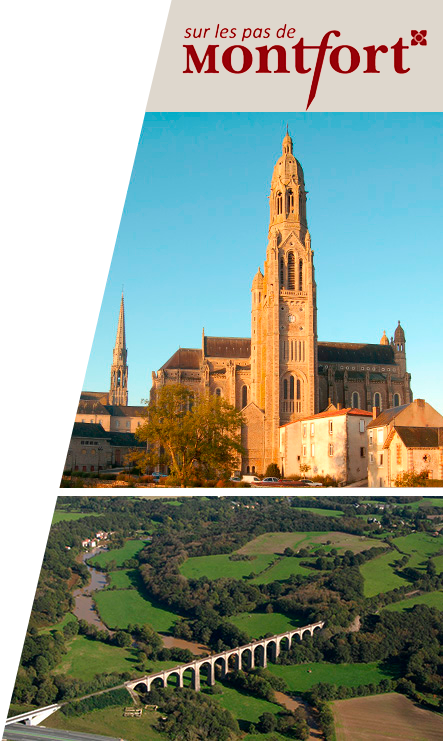Welcome to Saint-Laurent-sur-Sèvre. The town, enfolded by the meanders of the Sèvre Nantaise river, stands at the spot where the Gallic tribe of the Ambilatres settled on the river bank nearly 2,500 years ago.
So this was an attractive spot even then !
A deep and well-defined valley… A river alternating between calm waters and turbulent rapids… Some banks shady, others exposed… And all inhabited by dragonflies, salamanders and otters! In short, a romantic paradise.
But, let’s get back to the town’s history.
It was during the 5th and 6th centuries that the first church community was established in the valley, taking the name of Saint-Pierre-de-Savara.
In 1050, the local nobleman Basile Chabot commissioned the construction of a manor house, followed by a church near by endowed with a holy relic of a deacon martyred in Rome in 258: Saint-Laurent.
It was at this time that the community adopted the name of Saint-Laurent-sur-Sèvre and began to attract many pilgrims.
So is this the only reason why there are so many belfries in Saint-Laurent ?
Definitely not.
All these buildings have been inspired by a flamboyant missionary priest: Saint Louis-Marie Grignion de Montfort. Having first arrived to preach his mission, he died here suddenly on 28 April 1716.
Very soon after his death, his disciples chose to spend their lives close to his tomb.
The Daughters of Wisdom were the first to make that decision, followed by the Montfortian Missionaries.
In 1835, it was the turn of the ‘spiritual brothers’ of the Community, the Frères de Saint-Gabriel, formed from a separate branch of the Frères du Saint-Esprit, to build their base in Saint-Laurent-sur-Sèvre.
Gradually, the town’s skyline changed… until it bristled with towers!
Since then, all the Montfortian communities have contributed continually to the growth and development of Saint-Laurent-sur-Sèvre.
The town is also well known for other treasures linked to its economic history, like the Moulins de la Sèvre watermills, as well as its superb hiking and biking trails.

